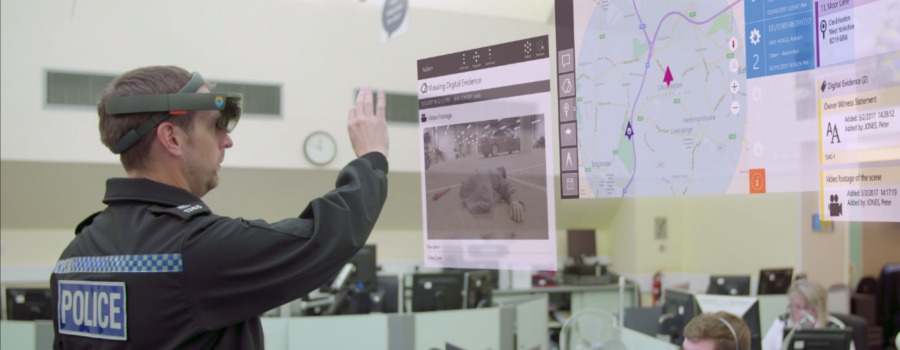The HoloLens and the Future of Crime Scene Investigation

By Asavin Wattanajan tra
tra
In the 2010 video game, Heavy Rain, an FBI agent called Norman Jayden hunts a killer with the use of a tool called an 'Added Reality Interface'. This consists of a pair of augmented reality glasses and a glove which allows him to reconstruct crime scenes and process evidence.
At the time, it seemed like we were many years away from seeing technology like this, as we were still getting used to smartphone-type technology. But with the Microsoft HoloLens, we might see these types of tools used in law enforcement sooner than we think.
One of Microsoft's Partner agencies, Black Marble, has been working on a proof-of-concept for the HoloLens that allows the capturing of content at the scene of a crime. Running on its Universal Windows Platform (UWP) application tuServ, they built a proof-of-concept Scene of Crime Application that allows users to explore the scene of a crime, placing virtual markers and gathering multimedia evidence without disturbing and tainting evidence.
It can even work long after a crime scene has been cleared. Through the Scene of Crime Application, investigators can return virtually to the scene of the crime, viewing the virtual markers that had been placed, as well as the evidence already gathered. Everything is placed where it was, allowing an investigator to get an understanding of the crime scene as if it hadn’t been cleaned up. Media can even be captured, with police officers able to playback footage at a police station.
HoloLens Command and Control
Black Marble has also been working on running tuServ on the HoloLens as a portable command and control unit. The augmented glasses can be used to view active officers and incidents in real-time on a map interface, allowing them to have an overview of everything going on in an area. Through the Command and Control app, officers can assign each other to incidents, communicate with each other on the ground, and build a live picture of what’s going on in real-time.
Nick Lyall of Bedfordshire Police, which tested the applications, said, “As a public order and firearms commander I can say that without doubt the use of HoloLens, through tuServ, will revolutionise policing for years to come.
“As a detective I can also say that its ability to scan crime scenes and create a mapped 3D version will allow for a reduction in cross-contamination issues and allow for investigators to visualise in real time the scenes of major crime.”
Black Marble has been working on Windows apps with Microsoft for some time, and the HoloLens apps were possible due to the previous work the agency did in building the Windows application tuServ. The aim of tuServ was to reduce dependencies on paper, as the app could be equipped on a device such as a mobile phone or tablet computer by officers in the field, as well as staff at a police station.
HoloLens and UWP
Any developer using the UWP can create a HoloLens app. Whether they are looking to create a game, consumer or business app, they can create one universal app which targets a family of Windows devices.
This ability is at the heart of what makes tuServ possible. The Black Marble team are developing for one codebase, for any Window device they choose. For the police using tuServ, this means the officer using a smartphone will have the same experience to one using a tablet, meaning that they won’t have the problem of out-of-date software. Working with UWP also means that developers can make use of Cortana integration and other useful features, such as translation and facial recognition.
If you think that development for the HoloLens is for you, there are many resources available consisting of documentation, step-by-step tutorials and case studies.
---
For more information on the HoloLens, including in-depth development guides and tutorials, visit the developers section of the official HoloLens website.